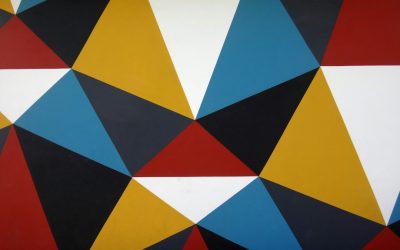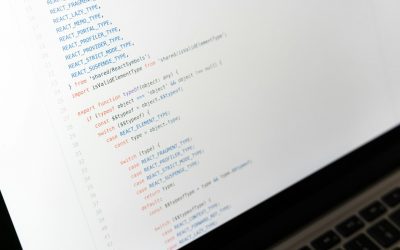Explore the World Through Geography, Natural Resources & Daily History
Clear, reliable and engaging guides that help you understand our planet — from UK geography education to global natural resources and On This Day history events.
Explore, discover, and learn about the wonders of our world! At Earth Site, we’re passionate about bringing geography, history, and science to life for curious minds of all ages. Whether you’re delving into historical events, uncovering the mysteries of the natural world, or seeking interactive resources, you’re in the right place.
Here, you can uncover the stories behind historical events, explore the natural wonders of our planet, and gain valuable insights into how the Earth’s systems shape our daily lives. From the towering peaks of mountain ranges to the far-reaching impacts of human innovation, we aim to make every topic both engaging and informative.
Start your journey of discovery with us today, and let’s make learning an adventure!
What We Cover
Earth Site brings together engaging and accessible educational content designed to help you understand the world, its history, and its natural systems.
🌍 Geography Education (UK & Worldwide)
We publish clear, easy-to-understand geography resources for students, teachers and curious learners. Our guides support geography education in the UK and cover physical geography, climate, ecosystems, population, and global development.
⛏️ Natural Resources & Environmental Geography
Explore detailed country profiles covering natural resources, mining, energy, geology and global environmental challenges. We show how nations manage minerals, water, land and ecosystems, and why these resources matter.
📅 On This Day in History
Every day has a story. Our On This Day history series features major events, anniversaries, traditions, and cultural milestones from around the world — with timelines, context, and fun facts.
TIMELINE
Sydney Funnel-web Spider: The Deadly Arachnid Lurking in Australia’s Backyard
The Sydney Funnel-web Spider (Atrax robustus) is widely regarded as Australia’s most dangerous arachnid. Found primarily in the Sydney region, this spider is known for its highly venomous bite, which can be fatal if left untreated. Understanding the dangers posed by this spider is of utmost importance, as it can help individuals take necessary precautions and seek appropriate medical attention in the event of a bite. Key Takeaways The Sydney Funnel-web Spider is Australia’s most dangerous arachnid. Identifying physical characteristics of the spider can help distinguish it from other species. The spider is found in certain habitats and regions of Australia. The venom of the Sydney Funnel-web Spider can be deadly to humans and animals. Signs and symptoms of a bite should be closely monitored and treated immediately. Physical characteristics of the Sydney Funnel-web Spider: Identifying the deadly creature The Sydney Funnel-web Spider is a large and robust spider, with males typically measuring around 1.5 to 3.5 centimeters in body length, while females are slightly larger, ranging from 2 to 5 centimeters. They have a shiny black or dark brown coloration, with a hairless carapace and a distinctive bulbous abdomen. The males are easily identifiable by their large, forward-facing fangs. In comparison to other spider species, the Sydney Funnel-web Spider stands out due to its size and aggressive behavior. While many spiders are relatively harmless to humans, this particular species poses a significant threat due to its potent venom. Habitat and distribution of the Sydney Funnel-web Spider: Where to find the arachnid The Sydney Funnel-web Spider is commonly found in moist habitats such as rainforests, wet sclerophyll forests, and...
Arachnophobia Alert: The Deadly Bite of the Brazilian Wandering Spider (Phoneutria spp.)
The Brazilian Wandering Spider, also known as the banana spider or armed spider, is a highly venomous spider that is native to South and Central America. It belongs to the genus Phoneutria, which means “murderess” in Greek, and is considered one of the most dangerous spiders in the world. The spider gets its name from its wandering behavior, as it does not build a web to catch its prey like other spiders. The Brazilian Wandering Spider is known for its large size, with a leg span that can reach up to 6 inches. It has a brown or tan body with distinctive markings on its abdomen. The spider is also known for its aggressive behavior and quick movements, making it a formidable predator. Key Takeaways The Brazilian Wandering Spider is one of the most venomous spiders in the world. They can be identified by their brown or black color, hairy legs, and distinctive red or pink marking on their abdomen. The venom of the Brazilian Wandering Spider can cause muscle spasms, paralysis, and even death in severe cases. Symptoms of a bite include pain, swelling, sweating, and difficulty breathing. Treatment for a bite includes seeking immediate medical attention, administering antivenom, and managing symptoms. How to identify a Brazilian Wandering Spider The Brazilian Wandering Spider can be identified by its physical characteristics. It has a large, robust body with long legs and a distinctive pattern on its abdomen. The spider’s body is usually brown or tan in color, with darker markings that resemble a violin shape on its abdomen. One way to differentiate between male and female Brazilian Wandering Spiders...
Unlocking the Beauty of Geometry: Exploring the Fascinating World of Shapes and Patterns
Geometry is a branch of mathematics that deals with the study of shapes, sizes, and properties of figures and spaces. It is a fundamental subject that has been studied for thousands of years and has played a crucial role in various fields such as art, architecture, design, and engineering. In this blog post, we will explore the magic of geometry and its hidden beauty in shapes and patterns. We will delve into the power of symmetry, the different types of shapes in geometry, the art of tessellation, the infinite beauty of fractals, the geometry of nature, the beauty of 3D shapes, the golden ratio, the language of geometry, and how technology is revolutionizing the way we see and use shapes. Key Takeaways Geometry reveals hidden beauty in shapes and patterns. Symmetry is a fascinating world of mirrored images. Tessellation creates mesmerizing patterns from simple shapes. Fractals showcase the infinite beauty of self-similar patterns. The golden ratio unveils the secret of perfect proportions. The Magic of Geometry: Discovering the Hidden Beauty of Shapes and Patterns Geometry is derived from the Greek words “geo” meaning earth and “metron” meaning measure. It is believed to have originated in ancient Egypt and Mesopotamia around 3000 BC. The ancient Greeks further developed the subject and laid the foundation for modern geometry. Geometry is not just a mathematical concept; it is also an art form. Artists, architects, and designers have long used geometric principles to create aesthetically pleasing patterns and designs. In art, geometry can be seen in various forms such as paintings, sculptures, and even tattoos. Artists use geometric shapes to create balance, harmony,...
Unlocking the Power of Functions: How to Streamline Your Code and Improve Efficiency
Functions are a fundamental concept in programming that allow developers to break down complex tasks into smaller, more manageable pieces of code. A function is a block of code that performs a specific task and can be called from other parts of the program. It takes input, performs some operations, and returns an output. Functions are important in programming for several reasons. First, they promote code reusability. Instead of writing the same code over and over again, you can define a function once and call it whenever you need to perform that particular task. This not only saves time but also makes your code more efficient and easier to maintain. Second, functions improve code organization and readability. By breaking down your code into smaller functions, you can make it easier to understand and navigate. Each function can have a specific purpose, making it clear what it does and how it contributes to the overall functionality of the program. Key Takeaways Functions are a powerful tool in programming that allow you to reuse code and improve efficiency. Function arguments and return values are essential components of creating and calling functions. Best practices for naming and organizing functions can make your code more readable and maintainable. Using functions can reduce code duplication and improve readability. Advanced techniques like passing functions as parameters and using lambda functions can further enhance the power of functions. Understanding the Concept of Function Arguments and Return Values Function arguments are the values that are passed into a function when it is called. They provide the necessary input for the function to perform its task. Arguments can...
Discovering the Best of Belgium: A Journey Through its Charming Cities and Delectable Cuisine
Belgium is a small country located in Western Europe, known for its unique culture and rich history. Despite its size, Belgium has made significant contributions to art, architecture, cuisine, and more. The country is famous for its medieval cities, charming canals, world-renowned chocolate and beer, and delicious cuisine. From the picturesque city of Bruges to the bustling capital of Brussels, Belgium offers a diverse range of attractions and experiences for visitors to enjoy. Key Takeaways Belgium has a unique culture and history that is worth exploring. Bruges is a charming UNESCO World Heritage Site that is a must-visit destination. Brussels is a vibrant capital city that blends old and new architecture. Belgian chocolate is a sweet treat that should not be missed. Belgian beer is a world-renowned tradition that is worth savoring. Bruges Bruges is a city in northwest Belgium that is often referred to as the “Venice of the North” due to its network of canals. The city’s historic center is a UNESCO World Heritage Site and is known for its well-preserved medieval architecture. Visitors to Bruges can explore the charming cobblestone streets, take a boat tour along the canals, and admire the stunning buildings that line the waterways. Some must-see attractions in Bruges include the Belfry of Bruges, which offers panoramic views of the city; the Basilica of the Holy Blood, which houses a relic believed to be the blood of Jesus Christ; and the Groeningemuseum, which showcases an impressive collection of Flemish art. Additionally, visitors can indulge in delicious Belgian chocolate at one of the many chocolate shops in the city or sample local beers at...
Mastering the Art of Factoring: Unlocking the Secrets to Simplifying Algebraic Equations
Factoring is an essential skill in algebraic equations that allows us to simplify and solve complex equations. It involves breaking down an equation into its constituent parts, which can then be manipulated and solved more easily. Factoring is a fundamental concept in algebra and is used in various areas of mathematics, science, and engineering. It is crucial for students to understand and master factoring as it forms the basis for solving equations and solving real-world problems. Key Takeaways Factoring is the process of breaking down algebraic equations into simpler components. Identifying common factors is crucial in factoring, as it simplifies the equation and makes it easier to solve. Quadratic equations can be factored using techniques such as the FOIL method and completing the square. Trinomials can be factored using methods such as grouping and the AC method. Factoring polynomials involves simplifying complex equations by breaking them down into simpler components. Factoring by grouping is a powerful technique for factoring algebraic equations. Special cases such as perfect squares and difference of squares have specific factoring methods. Advanced methods for factoring higher degree polynomials include synthetic division and the rational root theorem. Factoring can be used to solve real-world problems such as calculating interest rates and determining profit margins. Mastering factoring requires practice, patience, and utilizing resources such as textbooks and online tutorials. Understanding the Basics of Factoring in Algebraic Equations Factoring is the process of breaking down an algebraic equation into its constituent parts, such as numbers, variables, and operators. The goal of factoring is to simplify the equation and make it easier to solve. In factoring, we look for...
Mastering Polynomials: A Comprehensive Guide to Understanding and Solving Polynomial Equations
Polynomials are mathematical expressions that consist of variables, coefficients, and exponents. They are used to represent a wide range of mathematical relationships and are an essential concept in algebra. A polynomial can be defined as an expression that consists of one or more terms, where each term is a product of a coefficient and one or more variables raised to non-negative integer exponents. In a polynomial, each term is separated by either addition or subtraction. For example, the polynomial 3x^2 + 2x – 5 consists of three terms: 3x^2, 2x, and -5. The coefficient is the numerical factor that multiplies the variable, and the variable is the symbol that represents an unknown value. In the example above, the coefficients are 3, 2, and -5, and the variable is The degree of a polynomial is determined by the highest exponent of the variable in any term. For example, in the polynomial 3x^2 + 2x – 5, the highest exponent is 2, so the degree of the polynomial is 2. The degree of a polynomial can help determine its behavior and properties. Key Takeaways Polynomials are expressions made up of variables and coefficients. There are different types of polynomials, including monomials, binomials, and trinomials. Simplifying polynomials involves combining like terms and using the distributive property. Factoring polynomials involves finding the factors that multiply to give the original polynomial. Solving polynomial equations involves setting the polynomial equal to zero and using algebraic techniques to find the roots. The Different Types of Polynomials and Their Properties Polynomials can be classified into different types based on the number of terms they contain. A monomial...
Discovering the Hidden Gems of Belarus: A Journey Through Eastern Europe’s Best-Kept Secret
Belarus, a landlocked country in Eastern Europe, often remains a mystery to many travelers. Tucked away between Russia, Ukraine, Poland, Lithuania, and Latvia, Belarus offers a unique blend of cultures, history, and natural beauty that is waiting to be discovered. From its vibrant music and dance scene to its stunning landscapes and delicious cuisine, Belarus has something to offer every type of traveler. Despite its relatively small size, Belarus boasts a rich and diverse culture that is influenced by its neighboring countries. The country’s unique blend of Eastern and Western influences can be seen in its architecture, customs, and traditions. Whether you’re exploring the bustling streets of Minsk or venturing into the countryside, you’ll be captivated by the warmth and hospitality of the Belarusian people. Key Takeaways Belarusian culture is a fascinating blend of Eastern and Western influences. Belarus boasts stunning natural landscapes, including national parks and pristine lakes. Belarusian cuisine offers a delicious journey through local flavors, including traditional dishes like draniki and machanka. Belarus has a rich and complex history, with influences from neighboring countries and empires. Minsk, the capital of Belarus, is a vibrant city with a unique blend of Soviet-era architecture and modern culture. Belarusian Culture: A Fascinating Blend of East and West Belarusian culture is a fascinating blend of Eastern and Western influences. Throughout its history, the country has been influenced by neighboring countries such as Russia, Poland, Lithuania, and Ukraine. This cultural fusion can be seen in everything from the architecture to the cuisine. One of the most distinctive aspects of Belarusian culture is its traditional customs and celebrations. From Kupalle, a midsummer...
Breaking the Chains of Inequalities: How We Can Work Towards a More Equitable Society
Understanding and addressing inequality is crucial for creating a just and equitable society. Inequality refers to the unequal distribution of resources, opportunities, and power among individuals and groups. It is a complex issue that affects various aspects of our lives, including education, employment, healthcare, and social mobility. In this article, we will explore the roots of inequality, its impact on society, and strategies for reducing disparities. Key Takeaways Understanding the historical roots of inequality is crucial to addressing it effectively. Inequality has negative impacts on society and urgent action is needed to address it. Structural and systemic barriers must be identified and addressed to achieve equality. Education is a key tool for promoting equity and investing in the future. Empowering marginalized communities is essential for giving voice to the voiceless. Understanding the Roots of Inequality: A Historical Perspective To fully comprehend the issue of inequality, it is essential to examine its historical context. Inequality has existed throughout human history, but its manifestations have evolved over time. The legacy of colonization, slavery, and other forms of oppression has had a profound impact on marginalized communities. These historical injustices have created systemic barriers that continue to perpetuate inequality today. Colonization led to the exploitation and marginalization of indigenous peoples around the world. It resulted in the displacement of communities from their lands, loss of cultural identity, and economic exploitation. Slavery, particularly in the United States, created a deeply entrenched system of racial inequality that continues to shape society today. These historical injustices have had long-lasting effects on marginalized communities, leading to disparities in wealth, education, and opportunities. The Impact of Inequality...
Unlocking the Power of Equations: How Math Can Help Solve Real-World Problems
Equations are powerful tools that have the ability to solve complex problems and provide insights into the world around us. From the simplest calculations to the most intricate scientific research, math plays a crucial role in everyday life. Whether it’s calculating the cost of groceries, designing a bridge, or understanding the behavior of particles in a chemical reaction, math is at the heart of problem solving. Mathematics is not just a subject taught in schools; it is a fundamental part of our daily lives. It helps us make sense of the world and provides us with the tools to navigate through it. From managing personal finances to making informed decisions about health and well-being, math is an essential skill that empowers individuals to make better choices. Key Takeaways Equations are a powerful tool for solving real-world problems. Math plays a crucial role in tackling complex issues across various fields. Equations are essential in scientific research and development. Math is applied to engineering, technology, economic, business, environmental, social, political, healthcare, and medical challenges. The future of math is promising in solving global issues for a better world. Understanding the Role of Math in Tackling Complex Issues Mathematics is particularly important when it comes to tackling complex issues that require analytical thinking and problem-solving skills. For example, climate change is a complex issue that requires mathematical models to understand and predict its impact on the environment. By using equations to model the behavior of greenhouse gases and their effect on temperature, scientists can make informed decisions about mitigating climate change. Another example is in the field of economics, where math is...
Discovering the Hidden Gems of Barbados: Exploring the Island’s Best-Kept Secrets
Barbados is a tropical paradise known for its stunning beaches, vibrant culture, and warm hospitality. As a popular tourist destination, it offers a wide range of activities and attractions for visitors to enjoy. However, beyond the well-known tourist spots, there are hidden gems waiting to be discovered. These hidden treasures offer a unique and authentic experience of the island, away from the crowds and tourist traps. In this article, we will uncover some of the best-kept secrets of Barbados, from secluded beaches to hidden historical sites, off-the-beaten-path adventures to local culinary gems. Key Takeaways Barbados has many hidden treasures waiting to be discovered beyond the typical tourist attractions. The island boasts secluded beaches, secret gardens, and hidden historical sites that offer unique experiences. Adventurous travelers can explore off-the-beaten-path activities such as hiking, surfing, and swimming in natural wonders like waterfalls and caves. Foodies can indulge in Barbados’ best-kept culinary secrets, while those seeking unique accommodations can find hidden gems on the island. Nightlife enthusiasts can uncover secret bars and clubs for a fun night out in Barbados. The Best-Kept Beaches of Barbados: A Guide to the Island’s Secluded Shores Barbados is famous for its pristine beaches, attracting sun-seekers from around the world. While popular beaches like Crane Beach and Mullins Beach offer beautiful scenery and amenities, there are lesser-known, secluded beaches that offer a more tranquil and intimate experience. One such hidden gem is Bottom Bay Beach, located on the southeastern coast of the island. With its dramatic cliffs, powdery white sand, and crystal-clear turquoise waters, it is a true paradise for beach lovers. Another hidden beach worth exploring...
Unlocking the Power of Algebra: How to Solve Complex Equations with Ease
Algebra is a branch of mathematics that deals with symbols and the rules for manipulating those symbols. It is a fundamental part of mathematics and is used in various fields such as science, engineering, economics, and computer science. Algebra allows us to solve problems and make predictions by using equations and expressions. In this post, we will cover various topics in algebra, including simplifying algebraic expressions, solving linear equations, factoring quadratic equations, graphing linear equations, solving systems of equations, simplifying and solving rational expressions, understanding exponential and logarithmic functions, working with complex numbers, and using advanced algebraic techniques such as polynomial division and synthetic division. Key Takeaways Algebra is a branch of mathematics that deals with symbols and the rules for manipulating those symbols. Simplifying algebraic expressions involves combining like terms, using the distributive property, and factoring. Solving linear equations requires isolating the variable by performing the same operation on both sides of the equation. Quadratic equations can be solved by factoring or completing the square. Graphing linear equations involves finding the slope and y-intercept of the equation’s line. Simplifying Algebraic Expressions: Tips and Tricks Algebraic expressions are mathematical phrases that contain variables, constants, and operations such as addition, subtraction, multiplication, and division. They are used to represent relationships between quantities and can be simplified by combining like terms and using the distributive property. Like terms are terms that have the same variables raised to the same powers. To simplify an expression with like terms, you can combine the coefficients of those terms. The distributive property states that for any real numbers a, b, and c, a(b + c)...











